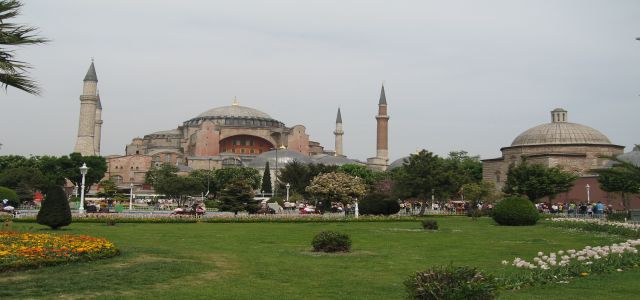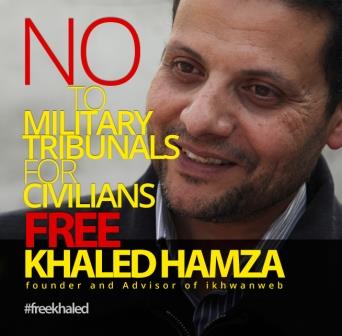|
||||||||||||
| :: Issues > Other Issues | ||||||||||||

Istanbul: a city of dilemmas
Misconceptions of Turkey make it seem like a backward society where women cannot walk around uncovered, mixing between sexes is forbidden and alcohol is unavailable. This cannot be further from the truth.
|
||||||||||||
| Monday, February 22,2010 20:31 | ||||||||||||
|
||||||||||||
|
Turkey, a country of roughly 90% Muslims is unlike any other Muslim country. The fascinating city of Istanbul is testament to this. Sprawling across a vast mountainous region at the junction of Europe and Asia and seemingly sunk in water, it feels like a European capital and the seat of the Ottoman caliphate simultaneously. Istanbul T-shirts sold at bazaars describe it as the “City of Dilemmas.” Thousands of minarets grace the skyline alongside modern skyscrapers, their lights reflected on the placid waters of the Golden Horn and Sea of Marmara. The call to prayer is heard like in any Muslim country; and in perfect harmony with the flashing red signs that read “Erotic Shop”. Many women wearing the hijab are seen; while others are much more revealing. Young and old bearded men carrying prayer beads are seen and alcohol is sold freely in all supermarkets. Young couples passionately kiss each other in the streets and on the tram without the slightest degree of harassment or disapproval by passersby. An attitude of “I let you do your thing and you let me do mine” prevails. Pictures of Ataturk, the founder of the modern Turkish Republic, adorn many shops as well as the money in your pocket. The common factor in all these scenes is the Turkish flag, present anywhere and everywhere in a fascinating display of patriotism. There is much to see and do in Istanbul, but certain things can’t be missed. One of these is the Blue Mosque. Also known as Sultan Ahmet Mosque, it was built by the Ottoman sultan between 1609 and 1616. It is characteristic of typical Ottoman architecture, with multiple domes and half domes and several minarets. The walls and ceiling are decorated with Islamic art and calligraphy at its finest. Similar designs can be seen in a familiar but smaller mosque in Egypt; the Muhammad Ali mosque in Cairo. A short distance away loom the massive domes of Hagia Sophia, meaning Church of the Holy Wisdom of God. It was the largest cathedral in the world for nearly a thousand years. The current building was the third church to occupy the site. It was later turned into a mosque after the Muslim conquest of Constantinople. Nowadays, visitors marvel at the magnificent domes decorated by the names of Allah, Muhammad and the four Caliphs; along with pictures of the Virgin Mary, Jesus and the cross. The architecture of the Hagia Sophia served as the principal model for many Ottoman mosques, including the Blue Mosque. Another museum within walking distance from the Hagia Sophia not to be missed is Topkapi palace, where the Ottoman sultans resided. An interesting display is that of the royal jewels, which houses diamonds and emeralds of sizes that no longer exist. The sacred artifacts collection is also a must see, though skeptics will not be convinced by many of the displays, such as the stick that Moses supposedly turned into a snake. Lovers of modern architecture and art should not, under any circumstances, miss the Dolmabahçe Palace, where the last six Ottoman sultans and Attaturk resided. The palace is in such beautifully preserved condition you’ll think the sultan will be returning any minute. The palace features a crystal staircase, fourteen tons of gold used to decorate the ceiling and various gifts from European royalty as well as the world’s largest Bohemian crystal chandelier. Bear in mind that visitors aren’t allowed to wander through the palace on their own. Outside the main palace, splendid views of the Bosphorus await. There are many more interesting mosques to visit, each with its own flavor, but only visitors on an extended stay will have the time. There are two bazaars worth visiting; the Grand Bazaar and Misri Bazaar. Both of these are covered marketplaces dating back to medieval times, and popular tourist attractions today. Get lost in the vast intricacies and tiny passages of the Grand Bazaar. One memorable shop owner there throws two fake hundred dollar bills on the ground, waiting for gullible tourists to pick them up. “Take, take, your chance!” he jokingly encourages. The bazaars contain just about anything; be it spices, honey, food, drink, clothing, accessories or souvenirs plus entire markets reserved for gold, leather and rugs. Several local delicacies are also waiting to be tried after you emerge from the Misri Bazaar and arrive at Yeni Mosque (also worth visiting, but if you have the time). These include d?ner kebab (gyros), better known as shawarma in the Arab world but tasting a hundred times better. Not to be eaten excessively by people with gout. Boiled and roasted corn are worth a try. Roasted chestnuts, or kestane, won’t appeal to everyone but are a must in Turkey (they’re available only in winter). Oysters stuffed with rice and seasoned with lemon are available to eat right on the spot. Simit, or circular bread with sesame seeds, is also available on the streets. For dessert, hop into your nearest Koska or Simit Sarayi (these are plentiful). I recommend the Turkish Delight and baklava, but there’s something for everybody’s sweet tooth. For shopping fanatics, the exceedingly long Istiklal Street is mandatory. It’s lined by hundreds of shops of all kinds. A little secret I learned: there is a single tiny alleyway branching from Istiklal where you’ll stumble upon heaps of very cheap, excellent quality clothes. It not hard to find; if you have walked long enough with Taksim Square behind you, you’ll find it on the right. If you get tired of walking in Istiklal, there is a little, picturesque, single car tram that traverses the street back and forth. The Golden Horn, that tiny sliver of water that branches from the Sea of Marmara and into the mainland, is not named in vain. Take a ferry ride during sunset and sit on deck, a truly pleasurable, relaxing experience. Note that this is best done in summer, since on most winter days the sun cannot be seen even at noon. At any given time, hundreds of seagulls glide across the skies and waters of Istanbul. If you’re lucky, one may even swoop down to your hand to snatch the bread out of it while you’re on deck! Touring Istanbul is best done with a map and a guide book. Tour companies will stuff you with other tourists into closed buses and deprive you of the fun of seeing and doing everything at a leisurely pace. When asking for directions, as you inevitably will, do not bother speaking English because most people’s English is like your Turkish. The best way is to show them the written name of the place you want to go to. If they happen to know, they’ll be extraordinarily kind and helpful. After finishing your visit, it seems that the nickname “City of Dilemmas” written on Istanbul T-shirts is every bit justified (and running a close second to Cairo). |
||||||||||||
|
tags: Turkey / Istanbul / Islamic Conquest / Caliphate
Posted in Other Issues |
||||||||||||
|
||||||||||||
|
||||||||||||
| Related Articles | ||||||||||||
|
|






